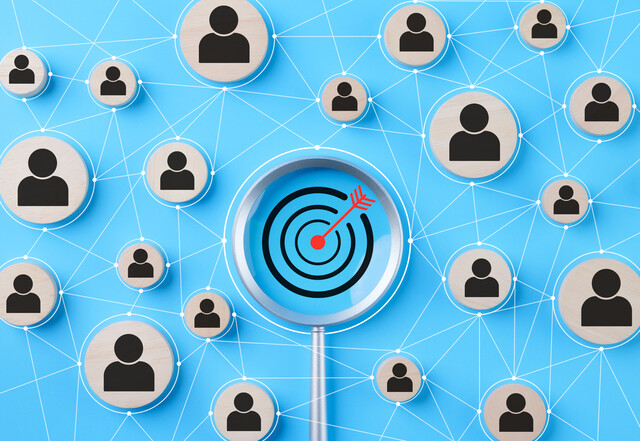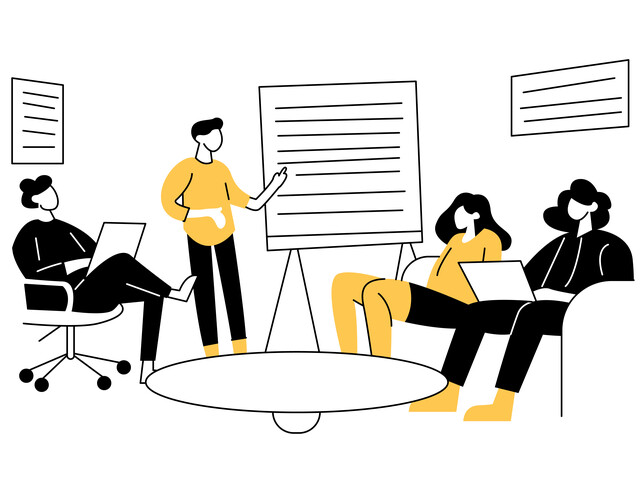-
A phone is a way to contact customers where they are rather than having them come in. Customers feel more comfortable in this setting, which can open them up to further sales. It also keeps you at the top of their mind.
-
A phone is an efficient tool: You will spend less time doing the same work than you would if you were talking to them in person.
-
Greet prospects and uncover needs.
-
Make sales.
-
Follow up with customer satisfaction calls.
-
Perform warranty management.
-
Answer questions and remove objections.
-
Provide niche information, like public service announcements for your particular customer niche.
-
want your customer to be informed?
-
want your customer to call you back?
-
want your customer to come into the store and buy from you?
-
Give your name.
-
Give your company name.
-
Give your number.
-
State the reason that you are calling.
-
Tell them what you would like them to do, such as call you back, etc.
-
Restate your name.
-
Restate your company name.
-
Restate your number.
Companies either hire out a third party company or do the phoning themselves. They call customers who had previously purchased something and ask them questions to see whether or not they are completely satisfied.
-
customers sometimes confuse these calls with telemarketing calls and can become upset.
-
some customers believe there is no reason to give a perfect score because they would not have been fully satisfied unless the product was free.
-
some customers prefer to transact business and not be hassled by follow-up calls.
Still this type of customer service follow-up can be a powerful technique.
Talking on the phone is an art that many business people are not familiar with. Today we tend to be very informal and rushed on the phone, which is not appropriate when dealing with customers. Some additional instruction on business telephone etiquette will enable you to impress your customers with every call.
Phone etiquette in general: You may know what to say when you answer the phone, but do you know how to say it? Being clear and precise when speaking is just as important as saying the right things. Remember, the person calling generally is not going to recognize your voice and may be unsure of whom to ask for. When you talk, pronounce each word clearly, speak slowly, and talk directly into the receiver so that the caller can understand you.
If customers begin to ask a question, do not talk over them or finish the sentence for them. Remember, these are not people you know and you are not a mind-reader. Even if you have a pretty good idea of what they are calling about, talking over them will give them the impression you are rushing them off the phone or are getting impatient with them, which are not impressions you want to make.
Listen carefully when the caller asks you a question. You may run into a problem understanding a caller because she or he talks too fast, has an unfamiliar accent or a speech impediment. Do not try to guess what was said. Ask politely if the person can repeat the question, explaining that you did not understand. If you start with an apology, they will not take offense; for example, say, "I'm sorry, sir, but I didn't quite catch your question. Could you please repeat that for me?" If the customer has given his or her name, be sure you write it down for future reference and ask for the proper spelling to prevent misunderstandings. For example, say, "You say your name is Ronald Thompson? Would that be Thompson with or without a 'p'? I want to make sure I've spelled it correctly."
A few other tips to keep in mind when you are talking on the phone to a customer:
� Give the caller your undivided attention. Do not work on your computer, shuffle papers, or do any other work while on the phone. Callers deserve your undivided attention, and most people can tell when you are only half listening.
� Never answer the phone with anything in your mouth, including gum, candy, or your lunch. Chomping in someone's ear sounds horrible. Do not sip your coffee while listening, either. The receiver will magnify your slurping.
� Make phone calls when there is minimal background noise. If possible, close your office door. Always turn down the radio and avoid calling when office news is at its peak.
Putting a customer on hold: When customers call, try to avoid putting them on hold at all costs. Remember, their time is as important as yours and they may feel slighted if you interrupt them and put them on hold, particularly if they are left hanging indefinitely. If you must briefly put them on hold -- for instance, to transfer them to the appropriate person -- be sure they know what you are doing and agree to it and they wait only a limited amount of time.
If you have to put a caller on hold, be sure you ask first and make sure they agree to it before proceeding. Some customers would rather call back or leave a message than wait around on hold, particularly if they are calling from a cell phone or from their place of employment. Never answer the phone and immediately put the caller on hold. There is nothing as irritating as hearing, "Thank you for calling, please hold." It is impersonal and gives callers the impression that you assume whatever you have to do is more important than their call.
If you must put someone on hold, ask him or her if it is okay. If the caller expresses concern, explain that it will be only briefly and explain why you need to put the call on hold. For instance, explain that you need to transfer the call to someone who can provide assistance or so that you can pull the customer's file. Whatever the reason, make it clear to the caller so that she or he understands you are doing so in order to provide assistance, but keep it brief and to the point.
When you put someone on hold, do not forget about the call. Remember to check on it every 30 to 40 seconds and give the caller an update if you or someone else cannot get back to the call immediately. Again, short and simple is the best route: "Mr. Wilson? Jack will be right with you; he's just finishing another call." After two or three minutes, do not be surprised if the caller hangs up in frustration. If you are not sure how long a caller will be left hanging on hold, your best bet is to take a message instead and assure the customer that you will relay the message and have someone get back to her or him as soon as possible.
Taking a message: If a customer calls and the person they need or want to talk to is not available, be sure to take a clear, detailed message that can be relayed to the appropriate individual. Ask the caller if you may take a message, then wait for an answer. If the caller agrees, provide a brief explanation as to why you need to take a message and cannot offer immediate assistance. For example, "I'm sorry, but Mike is out of the office and you will need to talk to him. Can I take a message and have him get back to you?" or "I need to turn this over to the billing department. If I could take a message, someone from that department will check on this and call you back with an answer."
When taking the message, you should always note the following information:
- The customer's name and a phone number.
- Whom the caller would like to talk to if he or she has a preference.
- The caller's question or concern.
- A convenient time when the caller can be reached.
- The day, time, and date of the call.
Write everything down and be sure to ask for the spelling of the caller's name or any other information you are not sure about. Write out the message clearly and concisely and sign it with your name so that if there are any questions, the recipient knows with whom to follow up. Make sure you relay the message as soon as possible.
Speaker phone use: In some cases, you may use a speaker phone when talking with a customer. Generally speaking, this should only be in the event of a meeting, when several people will be contributing to the conversation, and with the permission of the caller. If you are busy or have your hands full, it is tempting to put a customer on speaker phone for your convenience; however, this creates multiple problems. First and foremost, if callers do not know that they are on speaker phone, they may say things they would have preferred remain private. What if they are relaying credit card information, complaining about service from an employee they do not know is listening, or explaining why they are late with some payments? Any of these scenarios should be completely private; a speaker phone invites not only other employees but potentially in-store customers to listen in on the caller's business.
Speaker phones also are notoriously difficult for the caller in terms of sound quality. While you can hear the caller quite easily because he is speaking directly into the receiver, your customer is probably struggling on his end because the speaker is picking up all of the background noise on your end. It is also likely to annoy your customer if he or she has to ask you to repeat yourself because you are moving about your office or there are other conversations taking place nearby.
The speaker phone should only be used with the caller's permission and if the speaker phone is in a location that will ensure little if any interference; i.e., a conference room with the door closed. The only others listening should be those individuals who are relevant to the conversation, and they should always be introduced properly to customers so that they know who is listening. For instance, "Mr. Rinaldi, if it's okay, I'd like to put you on speaker phone because our manager, Mrs. Fleet, is here. I think among the three of us, we can work this out to your satisfaction."
Ending phone calls: Always end any customer service telephone calls on a positive note. Thank customers for calling and wish them a good day. If they are not happy with the result of the call, apologize and, if you plan to continue trying to pursue a satisfactory result, let them know it. After you have thanked a customer and wished him or her well, allow some time for the caller to hang up. Try not to be the first person to hang up the phone to avoid giving the impression that you are rushing the caller off the line. If you end each call on a positive note, customers are more likely to keep coming back. Often, the last impression you make is the one they carry with them long after the call is ended. The proper courtesy at the end of a frustrating call can turn the entire situation around.
Conclusion
There is more to good phone etiquette than simply how you answer a call. Today's technology can muddy the waters of customer service relations, unless you always keep in mind that the customer's needs must come first.
























